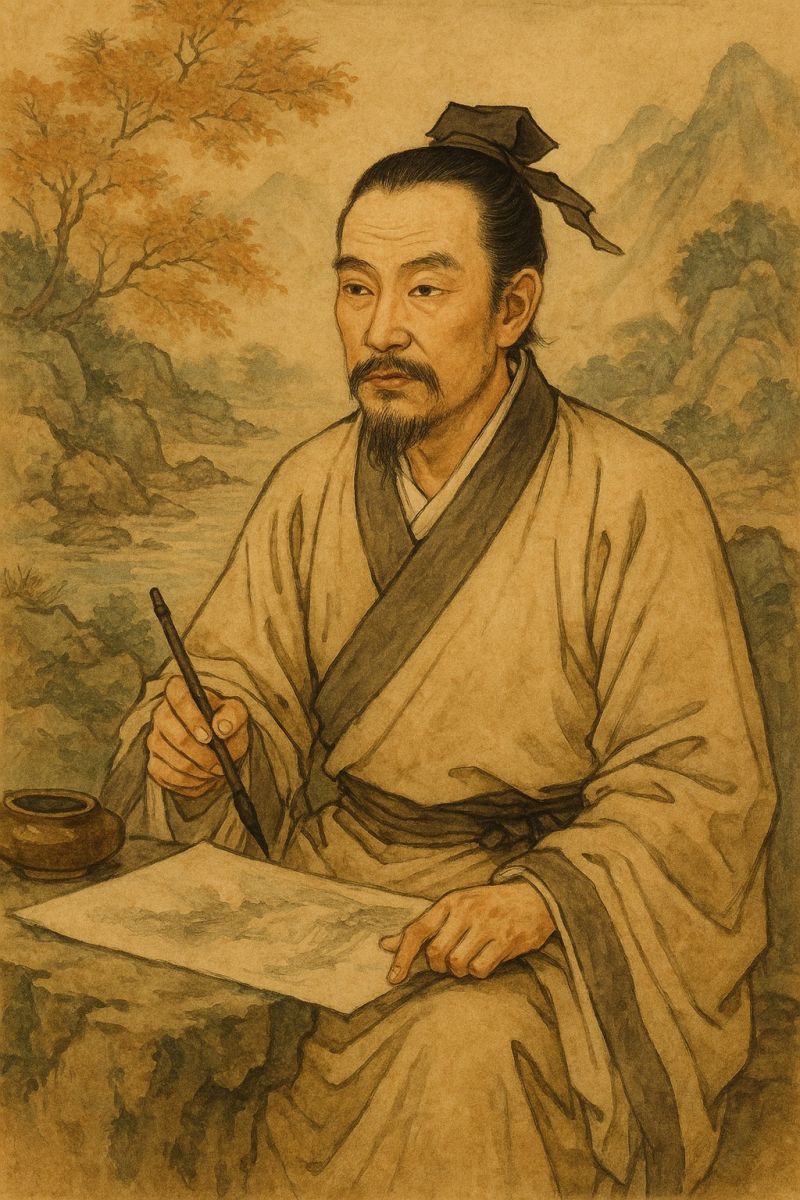中國有史以來最牛逼的畫家:唐伯虎
唐伯虎(1470–1524),本名唐寅,字伯虎,號六如居士,是明代著名的書畫家、詩人,與祝枝山、文徵明、徐禎卿並稱「吳中四才子」。他自幼天資聰穎,十六歲即考中蘇州府試第一名,成為當地知名的少年才子。二十九歲時,他在應天府鄉試中奪魁,獲得「南京解元」的稱號,前途一片光明。
然而,命運對他並不仁慈。次年赴京參加會試時,他捲入一場科場舞弊案,雖然他本人並未直接參與作弊,但因與涉案者關係密切,被牽連其中,最終被革去功名,終身不得為官。這場變故使他從仕途的巔峰跌入谷底,生活陷入困頓,妻子離他而去,親友疏遠,讓他飽嘗人情冷暖。
仕途無望後,唐伯虎將精力轉向詩書畫創作。他的畫風融合南北畫派,筆鋒細緻,布局大氣,風格秀逸清雅,色彩艷麗,擅長山水、人物、花鳥畫,作品中常流露出他對人生的感慨與對自由的嚮往。他自號「桃花庵主」,在蘇州城西北的桃花塢築庵居住,過著賣畫為生的生活,並創作膾炙人口的《桃花庵歌》,其中「別人笑我太瘋癲,我笑他人看不穿」成為千古名句。
1514年,唐伯虎受明宗室寧王重金聘請,到南昌擔任幕僚。後來他發現寧王意圖謀反,為求自保,他佯裝瘋癲,成功脫身返回故里。此後,他轉而信佛,自號「六如居士」,生活更加清貧,常年多病,最終於1524年去世,享年五十四歲。
儘管生前生活困頓,唐伯虎的藝術成就卻在後世備受推崇。他的畫作在拍賣市場上屢創高價,其中《庐山观瀑图》曾在拍賣會上以5.9億美元(約合人民幣36億元)的價格成交,刷新其作品的世界紀錄。此外,《松崖別業圖》在2013年以7130萬元人民幣成交,《行書七古詩卷》在2021年以5750萬元人民幣成交,顯示出他在書畫領域的非凡成就和持久影響力。
唐伯虎的一生充滿傳奇色彩,從少年得志到仕途受挫,再到以藝術自娛自足,他的經歷反映明代文人的命運起伏。他的作品不僅展現高超的藝術技巧,更蘊含著深刻的人生哲理和對自由的追求,成為中國藝術史上的瑰寶。
Tang Bohu (1470–1524), whose real name was Tang Yin and styled himself Bohu, was also known by his sobriquet “Master of the Six Like Studio” (Liuru Jushi). He was a renowned painter, calligrapher, and poet of the Ming dynasty. Alongside Zhu Zhishan, Wen Zhengming, and Xu Zhenqing, he was celebrated as one of the “Four Talents of Wu.”
Gifted from a young age, Tang Bohu passed the Suzhou prefectural examination at the age of sixteen, gaining fame as a young prodigy. At twenty-nine, he ranked first in the provincial examination held in Nanjing, earning the prestigious title of “Jieyuan” and setting himself on a promising path toward a successful official career.
However, fate was not kind to him. The following year, during the metropolitan examination in the capital, he became entangled in a cheating scandal. Although he was not directly involved in the fraud, his close association with those who were implicated led to his downfall. As a result, he was stripped of his academic honors and permanently barred from holding any official position. This event marked a turning point in his life—from the height of scholarly success to utter disgrace. Tang faced financial hardship, was abandoned by his wife, and gradually alienated from his friends, experiencing the harsh realities of human indifference.
With no hope left in officialdom, Tang Bohu redirected his energy to painting, calligraphy, and poetry. His painting style harmonized the techniques of both Northern and Southern schools, marked by delicate brushwork, bold compositions, graceful elegance, and vivid colors. He excelled in landscape, figure, and bird-and-flower paintings, often imbuing his art with reflections on life and a longing for freedom. He adopted the title “Master of the Peach Blossom Retreat” and lived in seclusion at Taohuawu (Peach Blossom Dock) in northwest Suzhou, earning a living by selling his paintings. During this period, he composed the widely loved poem The Song of the Peach Blossom Retreat, with the line “Others laugh at me for being too crazy; I laugh at them for not seeing through things” becoming an immortal quote.
In 1514, Tang Bohu was invited by Prince Ning of the Ming imperial family to serve as a private advisor in Nanchang. Realizing the prince harbored rebellious ambitions, Tang feigned madness to escape the situation and safely returned home. Afterward, he turned to Buddhism and referred to himself as “Liuru Jushi” (Master of Six Like), leading a more austere and sickly life until his death in 1524 at the age of 54.
Though he lived in poverty during his lifetime, Tang Bohu’s artistic achievements gained immense recognition posthumously. His paintings have commanded record-breaking prices at auctions. For instance, Watching the Waterfall at Mount Lu reportedly sold for $590 million (approx. 3.6 billion RMB), setting a world record for his work. Additionally, Retreat by the Pine Cliffs fetched 71.3 million RMB in 2013, and Seven Ancient Poems in Running Script sold for 57.5 million RMB in 2021—testaments to his extraordinary talent and lasting influence in Chinese art.
Tang Bohu’s life was full of dramatic twists—from early fame to official disgrace, and finally to finding solace in the arts. His story reflects the volatile fate of Ming dynasty scholars. His works, rich in artistic mastery and philosophical insight, are timeless treasures in the history of Chinese art.

- 1
- 2
- 3
- 4
